
Scientists at the Institute of Nuclear Physics of the Polish Academy of Sciences propose that the Higgs boson may interact with ‘new physics’ via decay into exotic particles, according to ‘Hidden Valley’ models. These models suggest that future particle accelerators could observe this exotic decay, potentially paving the way for understanding new physics beyond our current Standard Model.
It may be that the famous Higgs boson, co-responsible for the existence of masses of elementary particles, also interacts with the world of the new physics that has been sought for decades. If this were indeed to be the case, the Higgs should decay in a characteristic way, involving exotic particles. At the Institute of Nuclear Physics of the Polish Academy of Sciences in Cracow, it has been shown that if such decays do indeed occur, they will be observable in successors to the LHC currently being designed.
When talking about the ‘hidden valley’, our first thoughts are of dragons rather than sound science. However, in high-energy physics, this picturesque name is given to certain models that extend the set of currently known elementary particles. In these so-called Hidden Valley models, the particles of our world as described by the Standard Model belong to the low-energy group, while exotic particles are hidden in the high-energy region. Theoretical considerations suggest then the exotic decay of the famous Higgs boson, something that has not been observed at the LHC accelerator despite many years of searching. However, scientists at the Institute of Nuclear Physics of the Polish Academy of Sciences (IFJ PAN) in Cracow argue that Higgs decays into exotic particles should already be perfectly observable in accelerators that are successors to the Large Hadron Collider – if the Hidden Valley models turn out to be consistent with reality.
“In Hidden Valley models we have two groups of particles separated by an energy barrier. The theory is that there could then be exotic massive particles that could cross this barrier under specific circumstances. The particles like Higgs boson or hypothetic Z’ boson would act as communicators between the particles of both worlds. The Higgs boson, one of the most massive particle of the Standard Model, is a very good candidate for such a communicator,” explains Prof. Marcin Kucharczyk (IFJ PAN), lead author of an article in the Journal of High Energy Physics, which presents the latest analyses and simulations concerning the possibility of detecting Higgs boson decays in the future lepton accelerators.
The communicator, after passing into the low energy region, would decay into two rather massive exotic particles. Each of these would, in picoseconds – that is, trillionths of a second – decay into another two particles, with even smaller masses, which would then be within the Standard Model. So what signs would be expected in the detectors of future accelerators? The Higgs itself would remain unnoticed, as would the two Hidden Valley particles. However, the exotic particles would gradually diverge and eventually decay, generally into quark-antiquark beauty pairs visible in modern detectors as jets of particles shifted from the axis of the lepton beam.

The search for exotic Higgs boson decays in future lepton colliders: 1) an electron and a positron from opposing beams collide; 2) the collision produces a high-energy Higgs boson; 3) the boson decays into two exotic particles moving away from the axis of the beams; 4) exotic particles decay into pairs of quark-antiquark, visible to detectors. Credit: IFJ PAN
“Observations of Higgs boson decays would therefore consist of searching for the jets of particles produced by quark-antiquark pairs. Their tracks would then have to be retrospectively reconstructed to find the places where exotic particles are likely to have decayed. These places, professionally called decay vertices, should appear in pairs and be characteristically shifted with respect to the axis of the colliding beams in the accelerator. The size of these shifts depends, among other things, on masses and average lifetime of exotic particles appearing during the Higgs decay,” says Mateusz Goncerz, M.Sc. (IFJ PAN), co-author of the paper in question.
The collision energy of protons at the LHC, currently the world’s largest particle accelerator, is up to several teraelectronvolts and is theoretically sufficient to produce Higgs capable of crossing the energy barrier that separates our world from the Hidden Valley. Unfortunately, protons are not elementary particles – they are composed of three valence quarks bound by strong interactions, capable of generating huge numbers of constantly appearing and disappearing virtual particles, including quark-antiquark pairs. Such a dynamic and complex internal structure produces huge numbers of secondary particles in proton collisions, including many quarks and antiquarks with large masses. They form a background in which it becomes practically impossible to find the particles from the exotic Higgs boson decays that are being sought.
The detection of possible Higgs decays to these states should be radically improved by accelerators being designed as successors to the LHC: the CLIC (Compact Linear Collider) and the FCC (Future Circular Collider). In both devices, it will be possible to collide electrons with their anti-material partners, the positrons (with CLIC dedicated to this type of collision, while FCC will also allow collisions of protons and heavy ions). Electrons and positrons are devoid of internal structure, so the background for exotic Higgs boson decays should be weaker than at the LHC. Only will it be sufficiently so to discern the valuable signal?
In their research, physicists from the IFJ PAN took into account the most important parameters of the CLIC and FCC accelerators and determined the probability of exotic Higgs decays with final states in the form of four beauty quarks and antiquarks. To ensure that the predictions cover a wider group of models, the masses and mean lifetimes of the exotic particles were considered over suitably wide ranges of values. The conclusions are surprisingly positive: all indications are that, in future electron-positron colliders, the background of exotic Higgs decays could be reduced even radically, by several orders of magnitude, and in some cases could even be considered negligible.
The existence of particle communicators is not only possible in Hidden Valley models, but also in other extensions of the Standard Model. So if the detectors of future accelerators register a signature corresponding to the Higgs decays analyzed by the Cracow researchers, this will only be the first step on the road to understanding new physics. The next will be to collect a sufficiently large number of events and determine the main decay parameters that can be compared with the predictions of theoretical models of the new physics.
“The main conclusion of our work is therefore purely practical. We are not sure whether the new physics particles involved in Higgs boson decays will belong to the Hidden Valley model we used. However, we have treated this model as representative of many other proposals for new physics and have shown that if, as predicted by the model, the Higgs bosons decay into exotic particles, this phenomenon should be perfectly visible in those electron and positron colliders which are planned to be launched in the near future,” concludes Prof. Kucharczyk.
Reference: “Search for exotic decays of the Higgs boson into long-lived particles with jet pairs in the final state at CLIC” by Marcin Kucharczyk and Mateusz Goncerz, 17 March 2023, Journal of High Energy Physics.
DOI: 10.1007/JHEP03(2023)131
The research in question was funded by an OPUS grant from the Polish National Science Centre.

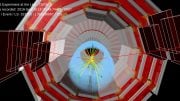
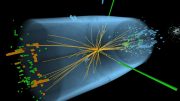
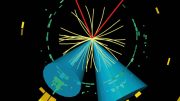
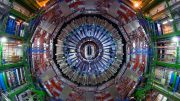
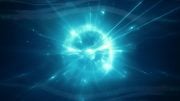
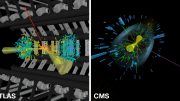
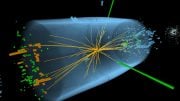
The physical phenomena observed in scientific experiments are often not all, let alone essential. Contemporary physics believes that the spin of the Higgs boson is zero. It can obtain mass through self interaction. According to the topological vortex gravitational field theory, zero spin is one of the interaction modes of topological vortex. If the spin is zero, mass can be obtained. Topological vortices are more capable of obtaining mass in interactions. Without the interaction of topological vortices, it is impossible to explain the zero spin of the Higgs boson, is impossible to explain whether the Higgs boson has gravity, and is impossible to explain where the mass of the Higgs boson comes from. The mass and gravity of the Higgs boson cannot come from God. God is a myth, not mathematics, let alone science.